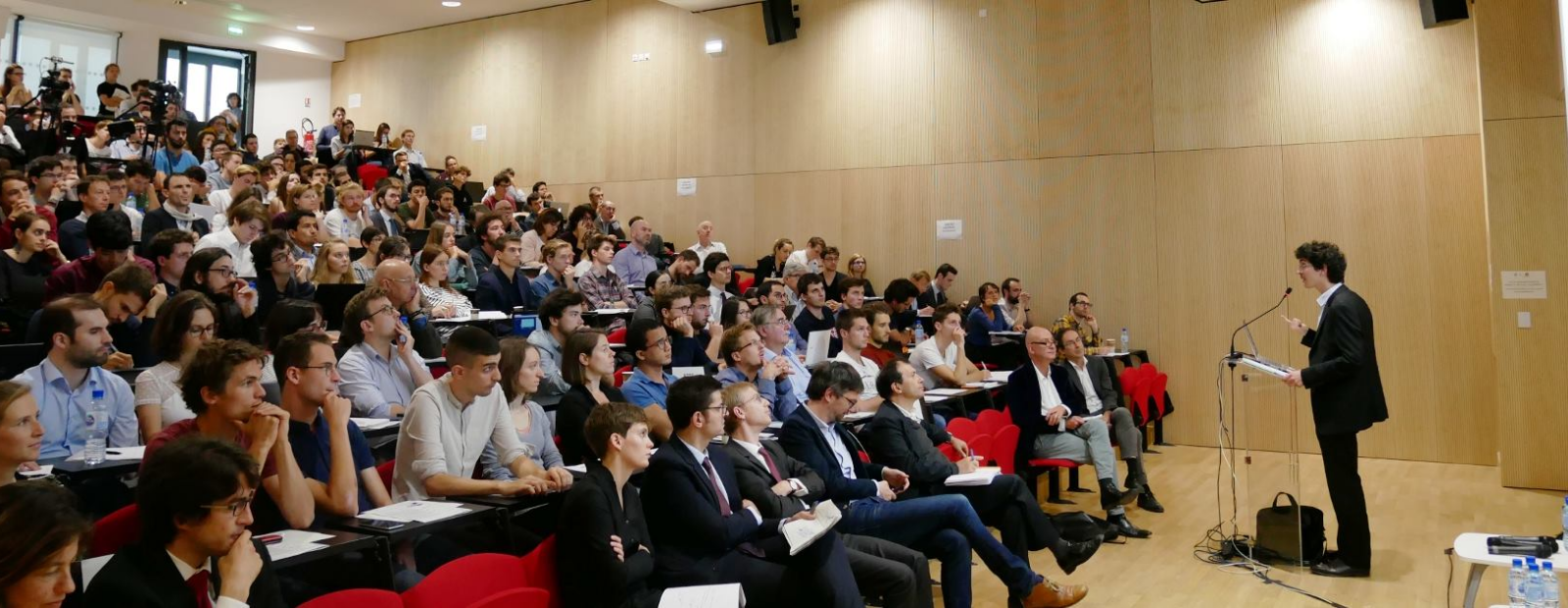Published in
- Professor
- Université Paris 1 Panthéon-Sorbonne
Research groups
- Associate researcher at the International Macroeconomics Chair and at the Measurement in Economics Chair.
Research themes
- Cycle
- Macroeconometrics
Contact
Address :48 Boulevard Jourdan,
75014 Paris, France
Campus:
Campus Jourdan
Floor: 4
Office: 10
Declaration of interest
See the declaration of interest
Tabs
Professor PSE and Université Paris 1
- “Identifying and interpreting the factors in factor models via sparsity: Different approaches”, with Thomas Despois, Journal of Applied Econometrics 2023, vol.38(4), pp 533–555, http://dx.doi.org/10.1002/jae.2967
- “Business Cycle Dynamics after the Great Recession“, PSE WP, 2020, with Laurent Ferrara and Pierre-Alain Pionnier.
- “Dynamic Factor Models“, in Macroeconomic Forecasting in the Era of Big Data, Theory and Practise, Peter Fuleky ed., Springer, 2020, with Peter Fuleky.
- “Forecasting French GDP with Dynamic Factor Models : a pseudo-real time experiment using Factor-augmented Error Correction Models“, PSE WP, 2018, with Stéphanie Combes.
- “Dating Business Cycle Turning Points for the French Economy : an MS-DFM approach”, in Advances in Econometrics, vol 35, Dynamic Factor Models, 2016, with Anna Petronevich.
- “Short term forecasting of French GDP growth using dynamic factor models”, OECD Journal : Journal of Business Cycle Measurement and Analysis, 2013(2), with Marie Bessec.
- “Prévision de court terme de la croissance du PIB français à l’aide de modèles à facteurs dynamiques”, Economie et Prévision, 2012, with Marie Bessec
- “A Quasi-Maximum Likelihood Approach for Large Approximate Dynamic Factor Models”, Review of Economics and Statistics, 2012, vol 94(4), pp.1014-1024, with Domenico Giannone and Lucrezia Reichlin.
- “A Two-Step Estimator for Large Approximate Dynamic Factor Models Based on Kalman Filtering”, Journal of Econometrics, 2011, vol. 164, pp. 188-205, 2011, with Domenico Giannone and Lucrezia Reichlin.
- “Factor Stochastic Volatility in Mean Models : a GMM approach”, Econometric Reviews, 2006, vol. 25(2/3), pp. 275-309, with Eric Renault.
- “Deux indicateurs synthétiques de l’activité industrielle dans la zone euro”, Note de Conjoncture de l’INSEE (Dossier), Juin 2000, with Fabrice Lenglart and Pascal Rivière.
- “Modèles à facteurs dynamiques : test du nombre de facteurs, estimation, et application à l’enquête de conjoncture dans l’industrie”, Annales d’Economie et Statistique, 1999, with Fabrice Lenglart.
- “Une grille de lecture pour l’enquête mensuelle dans l’industrie”, Note de Conjoncture de l’INSEE (Dossier), Décembre 1995, with Fabrice Lenglart.
- “Décompositions tendance-cycle : estimation par des méthodes statistiques univariées”, Economie et Prévision, 1995, with Guillaume Rabault and Nicolas Sobczak.
- “Décompositions tendance-cycle : les méthodes statistiques univariées” in Un premier bilan du dernier cycle, Commission des Comptes et des Budgets Economiques de la Nation, 1994, with Nicolas Sobczak.
- Note sur les tests de rationalité des prévisions, Economie et Prévision, 1993.
- Modèles VAR et prévisions à court terme, Economie et Prévision, 1992, with Pierre Malgrange.
- Vingt ans de prévisions macroéconomiques : une évaluation sur données françaises, Economie et Prévision, 1991, with Didier Borowski, Carine Bouthevillain, Pierre Malgrange, Pierre Morin.
- Advanced Macroeconometrics : APE M2, with Laurent Ferrara. See APE website
- Econométrie avancée des modèles linéaires : M1 Econométrie et Statistiques. Voir EPI Paris 1
- Econometrics 2 : APE M1, with Melika Bensalem. See APE website.
- Introduction à l’économétrie : L3 Economie. Voir EPI Paris 1.
- Macroeconometrics : ENSAE and MiE. See ENSAE website.
Publications HAL
-
La datation des cycles par le CDCEF : résultats des approches économétriques Book sectionAuthor: Claude Diebolt Editor: Economica
-
La datation des cycles économiques français : une revue de la littérature Book sectionEditor: Economica
Published in
-
Identifying and interpreting the factors in factor models via sparsity: Different approaches Journal articleJournal: Journal of Applied Econometrics
Published in
-
Dating business cycles in France : a reference chronology Journal articleJournal: Revue Economique
Published in
-
Identifying and interpreting the factors in factor models via sparsity : Different approaches Pre-print, Working paper
Published in
-
Identifying and interpreting the factors in factor models via sparsity: Different approaches Pre-print, Working paper
Published in
-
-
Business cycle dynamics after the Great Recession: An Extended Markov-Switching Dynamic Factor Model Pre-print, Working paper
Published in
-
-
Forecasting French GDP with Dynamic Factor Models : a pseudo-real time experiment using Factor-augmented Error Correction Models Pre-print, Working paper
Published in

